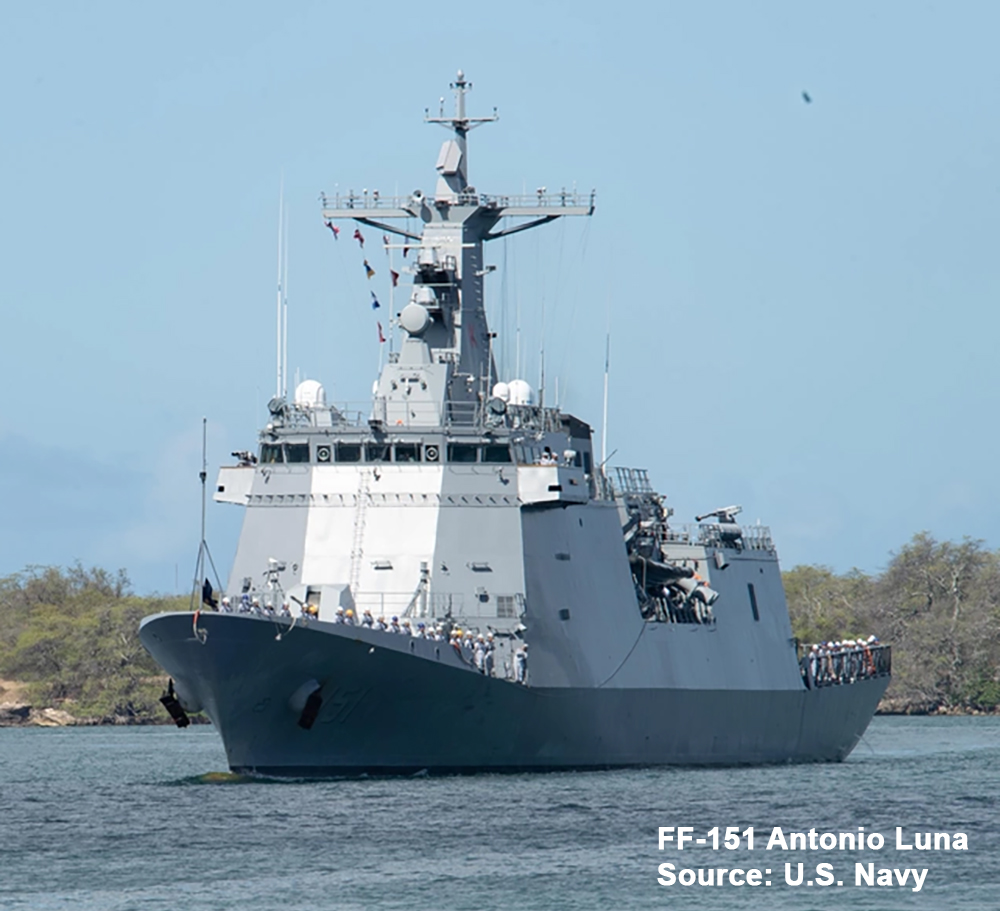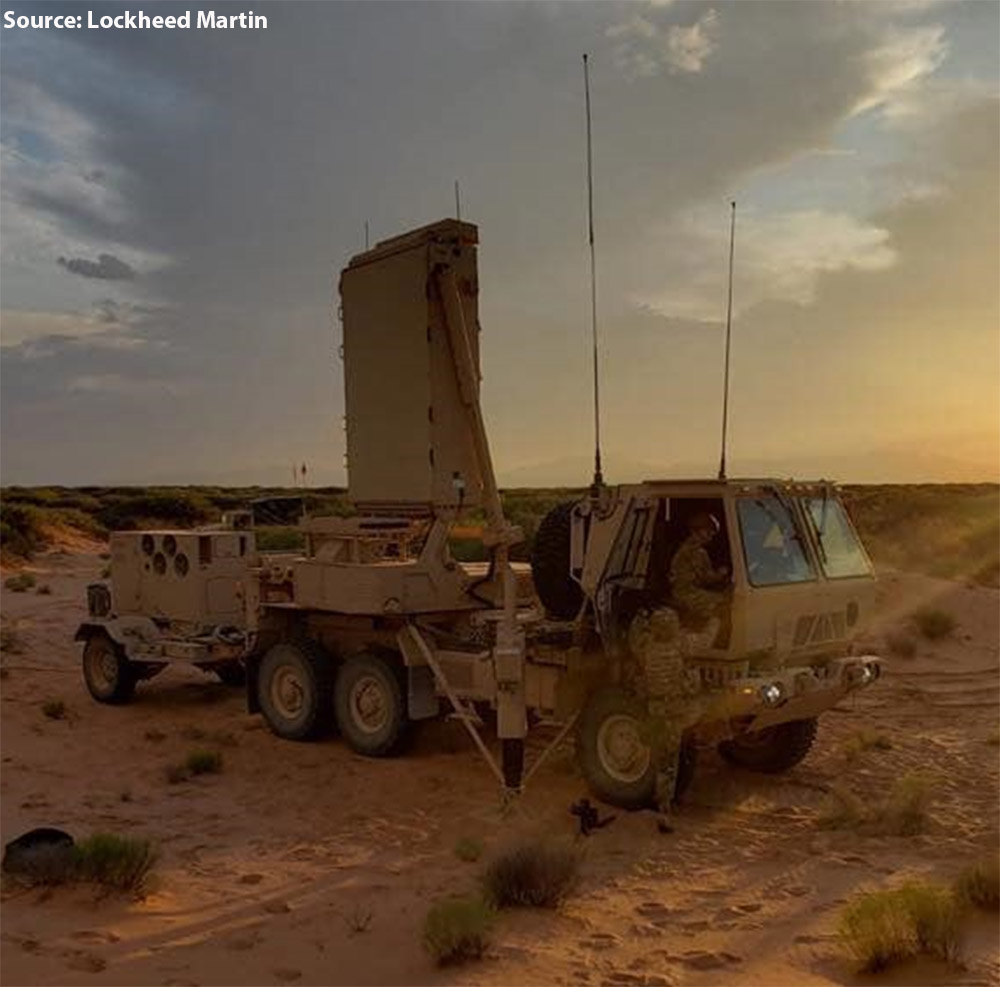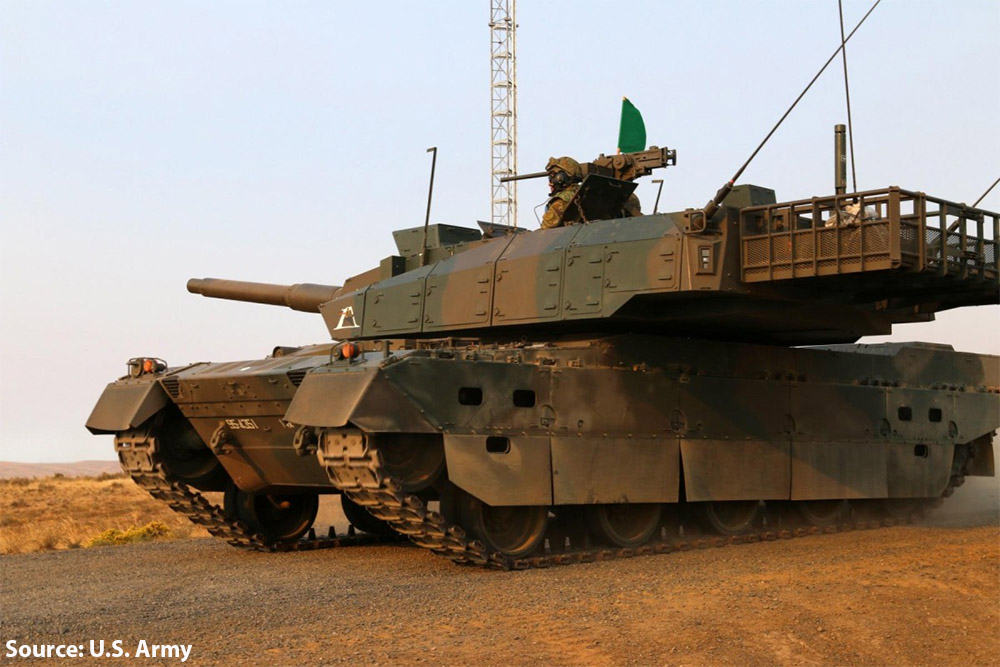What's New

Philippines' JOSE RlZAL-class Frigate Participates in Multinational Drills
The Philippine frigate JOSE RIZAL participated in a daylong naval drill with the U.S. and Japanese navies in the South China Sea dubbed the Multilateral Maritime Cooperative Activity. The drill saw the JOSE RIZAL alongside other allied warships practice sailing exercises, helicopter handling, radio communications and a speedboat transfer of U.S. sailors to the Philippine frigate. This two-ship frigate class was built by South Korea’s Hyundai Heavy Industries, derived from the HDF-3000 design. The class measures 352 ft 8 in (107.5 m) in length, with beams of 45 ft 3 in (13.8 m) and drafts of 12 ft (3.65 m). A top speed of 25 knots can be attained, however at 15 knots the ships can reach a maximum range of 4,500 nm (8,330 km). These ships are fitted with an extensive array of foreign-sourced weaponry including an Italian 76-mm Oto Melara Super Rapid, a Turkish 30-mm SMASH remote-control cannon, two French Simbad missile launchers and launchers for South Korean SSM-700K Sea Star anti-ship missiles.

AN/TPQ-53 Radar Integrated With U.S. Southern Border C2 System
Lockheed Martin announced last week it has successfully integrated the AN/TPQ-53 multi-mission radar with the U.S. Joint Task Force-Southern Border’s command and control (C2) systems. The 360-degree capable S-band solid-state radar will detect and track airborne and ground threats for the deployment. The TPQ-53 provides enhanced performance, including superior mobility, reliability and supportability and lower life-cycle costs compared to its predecessors. It has a smaller crew and can track targets in a full-spectrum environment. The system is typically mounted on a 6x6 medium tactical vehicle, designed for rapid deployment into the battlespace. As such, the radar system can be emplaced in five minutes and disabled in two. When operating in 360-degree mode, the system has a range between 9,840 ft (3,000 m) and 12 miles (20 km).

Type 10 Main Battle Tank Undergoing Upgrades
Japan's Type 10 Main Battle Tank (MBT) is undergoing a sizeable upgrade package geared at modernizing the platform and improving survivability. The MBTs will be fitted with an active protection system (APS) and a remote weapons station (RWS) armed with a 30-mm automatic cannon. Upgrades are intended to improve performance against anti-tank missiles and unmanned aerial systems (UAS). Japan's Ministry of Defense is currently assessing options from vendors including Rafael, Rheinmetall, Elbit Systems and Kongsberg to fulfill the upgrade tender issued late last year. The Type 10 is the newest MBT in Japan's arsenal, equipped with a baseline turret and chassis made of all-welded steel armor which incorporates ceramics and nano-steel. The primary armament of the Type 10 is a 120-mm smoothbore gun manufactured by Japan Steel Works (JSW), a variant of the Rheinmetall L44, with a thermal sleeve, fume extractor, and muzzle reference system. Additionally, the Type 10 is equipped with a coaxial Type 74 7.62-mm machine gun and a .50-caliber M2 HB machine gun mounted on the roof, which can be aimed and fired from within the turret. For defensive measures, the tank is outfitted with a bank of four electrically operated smoke-grenade launchers and four laser warning systems to enhance survivability on the battlefield. As many as 300 Type 10 tanks are planned to be procured, with 148 ordered through 2025.
Check Out What Else is New
New updates in March include the Philippine JOSE RIZAL class frigate, U.S. GORDON-class vehicle cargo ship, Tanzanian HUCHUAN-class patrol ship, and the U.S. AN/TPQ-53 counterfire radar.
Special Reports:
Denmark Announces Naval Overhaul
Tom Freebairn
Denmark made waves on March 30, when the Defense Ministry announced an ambitious plan for the significant modernization of the country’s naval forces. As part of this new plan, the Defense Ministry is calling for at least 26 new vessels to be acquired, with a roadmap laid for a major investment in and overhaul of the country’s naval defense. The proposal features long- and short-term plans for the Royal Danish Navy and the Naval Home Guard, covering procurement, capabilities and strategic goals. As the security environment evolves rapidly for Denmark, heightened insecurities have merited increased funding for defense at sea.
A Backgrounder on Trump’s Golden Dome for America
Daniel Darling
Since returning to the White House, the Trump administration has voiced its desire for an Iron Dome for America that would, in essence, reprise for the U.S. what the Israeli Iron Dome air defense system has done for the Middle East nation. While the Iron Dome system – developed by Israeli company Rafael Advanced Defense Systems with U.S. support – has indeed proved quite effective against missiles and rockets launched by terrorist groups along Israel’s borders, it is designed as a short-range interceptor shield and forms just one layer of the country’s larger air-defense network. What the Trump administration is asking for, in essence, is a replication of Israel’s air-defense network but at a scale more than 400 times larger.
Military Periscope FEDLINK information
Service ID: UC
Contract Number: LCFDL24D0002
Military Periscope is a product of GovExec.
600 New Hampshire Ave., Suite 510,
Washington DC, 20037, USA.
customerservice@militaryperiscope.com
©Military Periscope 2025
All rights reserved. Redistribution of the content is prohibited without prior consent of Military Periscope.

